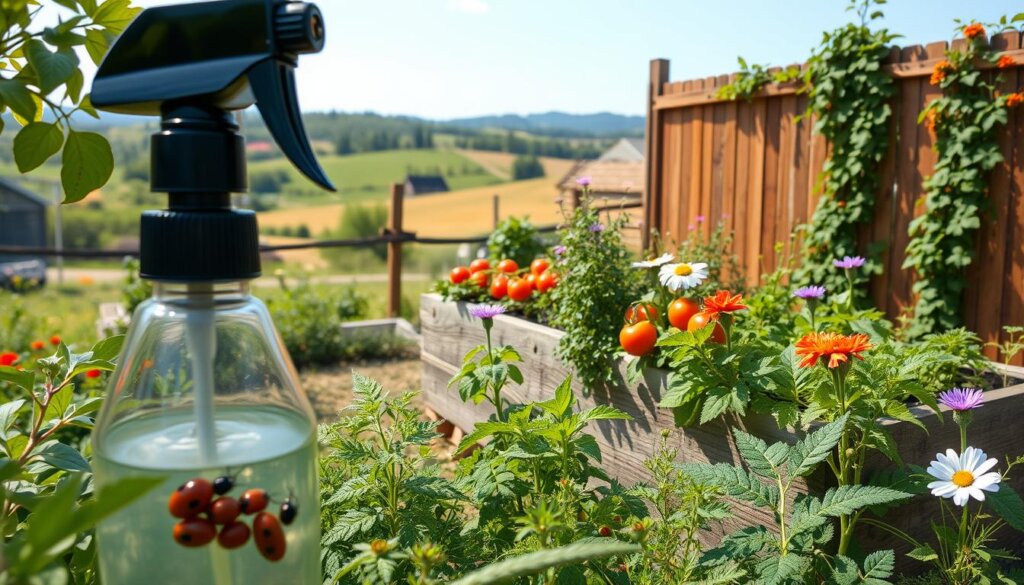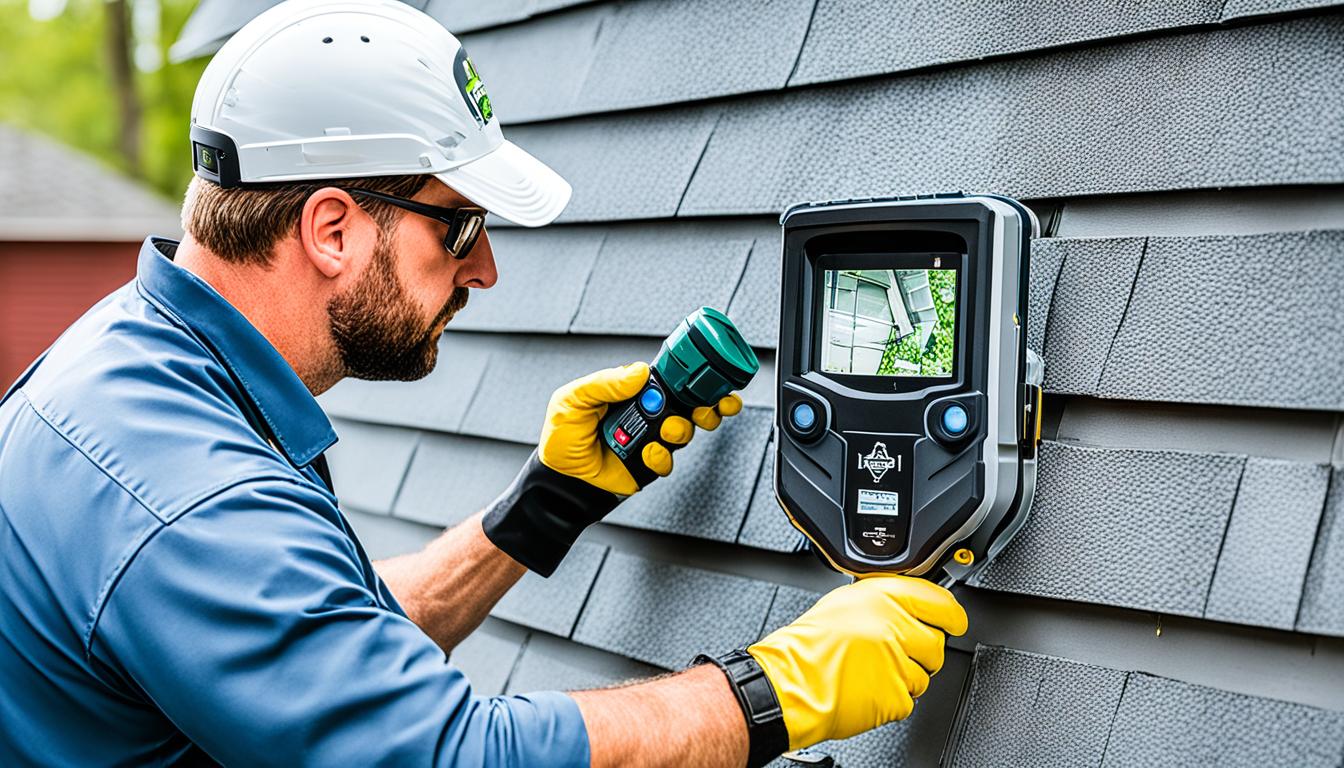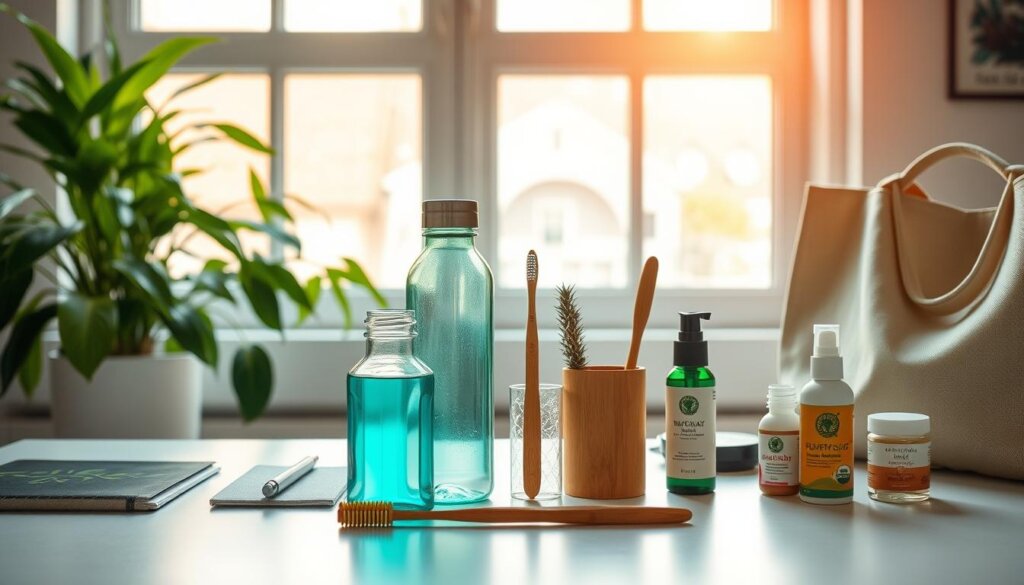Did you know almost 90% of American homes use pesticides every year? This shows we really need good ways to manage pests. It also shows more people want safe, green ways to fight pests.
As dispatchers, we must learn about both chemical and green pest control. We need to tell our clients about safer, greener choices. These choices help fight pests and also protect our planet.
Knowing about different green pest control methods is key. It helps us manage pests well and care for our planet.

Key Takeaways
- Nearly 90% of American households use pesticides annually.
- Eco-Friendly Pest Control Alternatives are in rising demand.
- Understanding chemical alternatives is critical for effective pest management.
- Dispatchers play a vital role in promoting green pest control.
- Reducing environmental impact through pest control is essential.
Understanding the Importance of Eco-Friendly Pest Control
In today’s world, eco-friendly pest control is very important. More and more people want to use safe ways to keep pests away. They want to protect our planet from harmful chemicals.
Using eco-friendly pest control helps keep our water clean. Too many chemicals can hurt our water and the animals in it. It also helps keep our planet healthy by supporting all kinds of life.
Choosing eco-friendly pest control is a smart choice. It helps keep us and our planet healthy. It shows we care about the future of our world.
The Rising Demand for Eco-Conscious Pest Control Strategies
People are now more aware of the environment. This has made them look for eco-friendly pest control. They want solutions that match their values.
Businesses that use natural pest control are growing. They offer good services and talk about being green.
More customers want eco-friendly pest control over chemical ones. This shows a big change in how people think. They are choosing natural pest control solutions.
This change is making the pest control industry grow. Old companies are starting to use greener methods too.
Eco-Friendly Pest Control Alternatives
I’m looking into safe and green ways to deal with pests. Many people and companies want to use organic methods. These options are good for the planet and work well.
Benefits of Using Eco-Friendly Solutions
Eco-friendly pest control is safe for kids and pets. It uses plant-based stuff that’s not bad for other animals. This makes homes healthier and helps the planet.
It also means we don’t need as many chemicals. This makes pest control safer and better for the earth.
Potential Drawbacks of Chemical Solutions
Chemical pest control can harm the environment and people. It’s important to think about the long-term effects. Eco-friendly options are better for our planet.
Natural Pest Control Methods to Consider
Managing pests naturally is very effective and safe. Using natural methods is good for our health and the planet. Essential oils and beneficial insects are great for keeping our gardens and homes balanced.
Utilizing Essential Oils for Pest Repellent
Essential oils can keep pests away. Peppermint and tea tree oils are good at repelling insects. I mix them with water and soap in a spray bottle.
Spraying around entry points and infested areas helps keep pests away. The smell is nice and keeps pests from coming back.
The Role of Beneficial Insects in Pest Management
Beneficial insects are also important in pest control. Ladybugs and lacewings eat aphids and other pests. They help keep the garden healthy.
Using beneficial insects helps control pests without chemicals. This way, our gardens can thrive without harming the environment.
Commercial Eco-Certified Pest Control Options
Eco-friendly pest control is becoming more popular. Businesses want to be green. They choose commercial pest control services that are good for the planet.

This choice helps the environment and makes their brand look good. It attracts customers who care about the planet.
Many pest control companies use organic pest management. They use natural stuff and don’t use too many chemicals. This makes places safer for people.
It’s important to look for special certifications. These show a company really cares about being green. They prove a company is trustworthy and reliable.
Studies show businesses doing well with green pest control. They keep pests away and make places safer. It’s a good time for businesses to be green.
How to Evaluate Eco-Friendly Products
When I look for eco-friendly products, I check a few key things. I want to make sure they work well and are safe. It’s important to know where the ingredients come from.
I look for products made from natural ingredients. These can be as good as chemical ones but are safer. This helps me suggest green options to my clients.
Ingredients to Look For in Eco-Friendly Products
I search for ingredients that are good at fighting pests. Natural oils, plant extracts, and biodegradable stuff are great. They work well and are safer for people and pets.
By finding products with these ingredients, I can suggest eco-friendly choices. This makes me feel good about helping the planet.
Understanding Certifications and Labels
It’s key to understand product labels and certifications. Green Seal and EcoLogo are good signs. They mean the product meets high environmental standards.
I teach my clients about these labels. It helps them know they’re choosing the right eco-friendly products. This makes them feel confident in their choices.

Disposing of Chemical Pest Control Residue Responsibly
Dealing with chemical pest control means we must dispose of it right. This keeps our environment safe. We need to follow local rules for throwing away hazardous stuff.
Many places have special spots for these materials. This way, they are dealt with safely.
Using eco-friendly disposal methods is smart too. It helps recycle and supports the planet. I know how bad bad disposal can be for nature.
By being careful, we help make the future better. This is true for pest management too.
Creating an Integrated Pest Management (IPM) Plan
Creating a detailed Integrated Pest Management (IPM) plan is key for good pest control. It helps me manage pests in a way that’s safe for people and the planet. The first thing I do is check how many pests there are.
I look at what pests are there, how they live, and how many there are. This helps me decide what to do next.
Steps to Develop an Effective IPM Strategy
After checking the pests, I set action levels. These levels tell me when to take action against pests. I choose methods that are good for the environment.
This might be changing how I grow things, using natural enemies, or using safe chemicals. It’s all about being kind to the earth.
The Role of Monitoring and Evaluation in IPM
Pest monitoring is very important for a good IPM plan. It lets me see if what I’m doing is working. I need to keep checking and changing my plan as needed.
This way, I can deal with any changes in pests or the environment. It keeps my plan working well.
Training Dispatchers on Eco-Friendly Practices
It’s key to teach dispatchers about eco-friendly ways. This knowledge helps them work better for the planet. They learn how to talk to clients about green pest control.
Good training makes a big difference. It teaches dispatchers about natural pest control. This makes them very useful to their companies.
Teaching dispatchers to think green changes the game. With the right training, we can all help the planet. We focus on pest control that’s good for everyone.
Benefits of Sustainable Pest Management for Your Business
Thinking about sustainable pest management benefits for my business shows it’s more than just green. It makes my brand look good and attracts customers who care about the planet. People like to support businesses that are good for the earth, which makes them more loyal.
There’s also a big money side to it. Using fewer chemicals saves me money. I spend less on treatments and cleaning. This helps my business grow without breaking the bank.
Looking at other businesses that went green, they did well. They followed the rules and made more money. Choosing sustainable pest management shows I care about the planet and my customers. It’s good for everyone.
Conclusion
Switching to eco-friendly pest control is not just a trend. It’s a must for our industry. By choosing these options, we can lessen our harm to the environment. We can also keep pest numbers down.
Looking ahead, learning more about eco-friendly pest control is key. Knowing the latest methods helps us make better choices. It also encourages our clients to do the same.
Every small change helps a lot. Using natural repellents or Integrated Pest Management plans makes a big difference. We’re all working towards a greener future.
I’m excited to see our industry grow and help the planet. Let’s all work together. Let’s choose eco-friendly options now for a better tomorrow.
See how FieldAx can transform your Field Operations.
Try it today! Book Demo
You are one click away from your customized FieldAx Demo!
FAQ
What are eco-friendly pest control alternatives?
Eco-friendly pest control uses natural stuff and green ways to fight pests. It includes organic sprays, traps, and repellents made from plants.
Why is eco-friendly pest control important?
It’s key because it keeps our water clean and helps animals and plants. It also keeps us safe from bad chemicals.
What trends are driving demand for natural pest control methods?
More people care about the planet, so they want green pest control. This makes companies use better, safer ways to fight pests.
What are the benefits of using eco-friendly pest control solutions?
These solutions are safe for kids and pets. They also protect our planet and are better for animals. They’re gentler on the earth than old chemical ways.
How can essential oils be utilized for pest control?
Oils like peppermint and tea tree can keep pests away. They’re a natural way to fight pests without using harsh chemicals.
What role do beneficial insects play in natural pest management?
Bugs like ladybugs and lacewings help control pests. They keep the balance in nature and cut down on the need for chemicals.
How do I evaluate eco-friendly pest control products?
Look for products made from natural stuff that work well and are safe. Check for green labels to make sure they’re good for the planet.
What is responsible disposal of chemical pest control residues?
Dispose of chemical waste right by following local rules. This keeps our planet clean and supports green pest control.
What are the key steps in creating an Integrated Pest Management (IPM) plan?
First, check how many pests there are. Then, decide when to act. Use green methods and watch how they work.
Why is training dispatchers on eco-friendly practices important?
Teaching dispatchers about green pest control helps them share the news. It helps the industry be kinder to the earth.
What benefits do businesses gain from adopting sustainable pest management strategies?
Going green helps businesses look good and attract customers who care about the planet. It also saves money by using less chemicals.
Author Bio
Co-Founder & CMO at Merfantz Technologies Pvt Ltd | Marketing Manager for FieldAx Field Service Software | Salesforce All-Star Ranger and Community Contributor | Salesforce Content Creation for Knowledge Sharing





